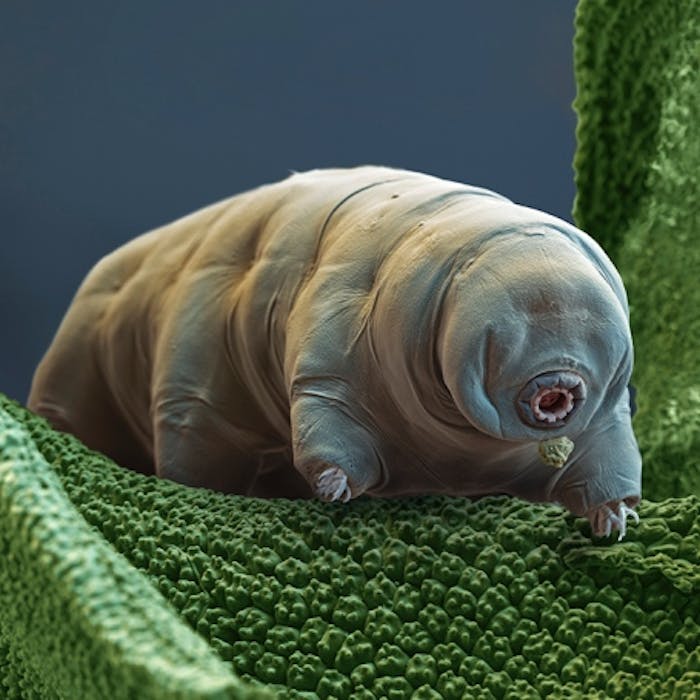
Tardigrades - the 'water bears' you can't see in your garden!
Tardigrades, or 'water bears', are rather appealing microscopic-sized animals and the first known species to survive after exposure to outer space.
Over 70 species have been identified in Britain, but, being so tiny, their distribution is yet to be properly mapped, though they will be found in places which are intermittently or permanently damp - including moss found in damper parts of any garden.
Tardigrades are eight-legged segmented creatures about 0.5 mm long when fully grown. They are short and plump, with four pairs of legs, each ending in claws or suction discs. They move very slowly and their name means 'slow walker'.
The little creatures are prevalent in mosses and lichens and feed on plant cells, algae, and small invertebrates. When collected, they may be viewed under a low-power microscope, making them accessible to students and amateur scientists – hence their popularity amongst science enthusiasts.
They have been found everywhere, from mountain tops to the deep sea and mud volcanoes, and from tropical rainforests to the Antarctic.
Tardigrades are among the most resilient animals known, with individual species able to survive extreme conditions—such as exposure to extreme temperatures, extreme pressures (both high and low), air deprivation, radiation, dehydration, and starvation—that would quickly kill most other known forms of life.
Tardigrades can dry out and survive for years without water. When water becomes available they are able to rehydrate and come back to life. Dried out Tardigrades (known as a tun) are so small and light, the wind will often pick them up like grains of dust and blow them for thousands of miles.
They have survived all five mass extinctions on Earth.
Further reading
Links to external websites are not maintained by Bite Sized Britain. They are provided to give users access to additional information. Bite Sized Britain is not responsible for the content of these external websites.
